 In today’s dynamic business environment, a robust performance management system (PMS) is no longer a luxury; it’s a necessity. It’s the engine that drives employee engagement, fosters continuous improvement, and ultimately, fuels organizational success. A well-designed PMS goes beyond simple annual reviews and becomes a strategic tool for aligning individual contributions with overarching company goals.
In today’s dynamic business environment, a robust performance management system (PMS) is no longer a luxury; it’s a necessity. It’s the engine that drives employee engagement, fosters continuous improvement, and ultimately, fuels organizational success. A well-designed PMS goes beyond simple annual reviews and becomes a strategic tool for aligning individual contributions with overarching company goals.
This post will delve into the key benefits of a strategic performance management system and highlight features like those found in platforms like FlexiEle, demonstrating how they can transform your workforce. We will also explore the crucial aspect of goal setting, specifically through Key Performance Indicators (KPIs).
What is Strategic Performance Management?
At its core, a strategic performance management system is a process that aims to:
- Align Individual and Organizational Goals: Ensure that every employee understands how their work contributes to the overall success of the company.
- Improve Performance: Provide employees with the tools, resources, and support they need to excel in their roles.
- Develop Employees: Identify areas for growth and development and create opportunities for employees to expand their skills and knowledge.
- Foster Communication and Collaboration: Encourage open and honest communication between managers and employees and promote a culture of teamwork and collaboration.
- Drive Accountability: Establish clear expectations and track progress, ensuring that employees are held accountable for their performance.
- Inform Decision-Making: Provide valuable data for making informed decisions related to compensation, promotions, training, and talent development.
Unlike traditional performance appraisal systems that often focus on retrospective evaluation, a strategic PMS is a forward-looking process that emphasizes continuous improvement and proactive development. It’s a continuous cycle of planning, monitoring, developing, and rewarding, aimed at maximizing individual and organizational performance.
The Key Element of Effective Strategic Performance Management System
While implementing a strategic performance management system careful planning and execution are required. The key elements to focus on are:
Improved Employee Performance:
Begin by setting specific, measurable, achievable, relevant, and time-bound (SMART) goals at both the individual and organizational levels. These goals should align with your company’s mission and vision.
Enhanced Employee Engagement:
employees feel valued, supported, and recognized for their contributions; they are more likely to be engaged in their work. A PMS can foster a culture of appreciation and create a sense of purpose, leading to higher morale and productivity.
Offering Feedback and Coaching:
Feedback should be a two-way street—clear, respectful, and timely. Let your team know what they’re doing well and where there’s room to grow. When feedback is paired with thoughtful coaching, it helps employees feel supported, not judged.
Supporting Growth and Development:
Everyone has room to grow. Use development plans to map out learning opportunities like training, mentoring, or new project challenges. These plans show your employees that you’re invested in their future, not just their present.
Addressing Performance Issues:
ometimes, employees may struggle to meet expectations. That’s where a Performance Improvement Plan (PIP) comes in. A good PIP is clear, fair, and solution-oriented—focused on helping the employee succeed, not just documenting failure.
Technology and Tools:
Invest in performance management software or tools that streamline the process. These tools can help you track goals, gather feedback, and generate reports efficiently.
Overcoming challenges while implementing Performance Management System
Implementing a strategic performance management system can be challenging. Challenges mainly revolve around lack of clarity, and inconsistent implementation can hinder its success. Here are some tips to overcome these obstacles:
Involving the employees in the process:
Seeking input from employees when designing and implementing the system can help you create a process that meets their needs and fosters buy-in.
Provide Training and Support:
Ensuring managers and employees understand how to use the system effectively. This can be made sure by offering training sessions, resources, and ongoing support to address any concerns.
Stay Flexible and Adaptive:
The workplace is constantly evolving, so your performance management system should be adaptable to changing circumstances. Regularly review and update the system to ensure its relevance and effectiveness.
How does FlexiEle enhance strategic performance management?
FlexiEle can significantly enhance your organization’s strategic performance management system by offering an integrated approach to goal setting, appraisal cycles, and performance summaries. Here’s how:
- FlexiEle’s PMS helps to set clear objectives and track progress effortlessly.
- Create pre-defined goals for employees during appraisal rounds.
- Enable easy self-evaluation and add feedback, training needs, or achievements.
- Receive real-time email notifications for actions by employees, managers, or reviewers.
- Track all appraisal changes in a detailed timeline.
- Use the “Send Back” feature to request adjustments with comments and notifications.
- Activate reminders for timely submissions from all participants.
Why do You need a Strategic Performance Management System?
A Strategic Performance Management System (SPMS) is essential for organizations seeking to achieve their long-term goals. It provides a structured framework for aligning individual and team efforts with the overall strategic objectives. Implementing an SPMS leads to:
- Improved Alignment: Ensures everyone understands and contributes to the company’s strategic goals.
- Enhanced Accountability: Clearly defines roles, responsibilities, and performance expectations.
- Data-Driven Decision Making: Provides performance data for informed strategic adjustments.
- Increased Efficiency: Streamlines processes and resource allocation based on performance insights.
- Better Employee Engagement: Boosts motivation through clear goals, feedback, and recognition.
The Role of Leadership in Performance Management
Leadership plays a crucial role in the success of a strategic performance management system. Leaders establish the tone for the organization’s culture and values, and their dedication to performance management serves as a model for others to emulate.
Effective leaders emphasize communication, offer constructive feedback, and acknowledge achievements. They also champion the professional development of their team members, nurturing a culture of continuous learning and improvement.
Conclusion
In today’s fast-moving and cutthroat business landscape, having a solid performance management system isn’t just a nice-to-have—it’s essential. By syncing individual and team efforts with the broader goals of the organization, boosting engagement, and encouraging growth, this system helps your workforce soar to new levels.
Keep in mind, the real strength of a strategic performance management system doesn’t come from the tools or processes themselves, but from the people who make it work. Invest in your team, cultivate their talents, and you’ll see them propel your organization toward success.

